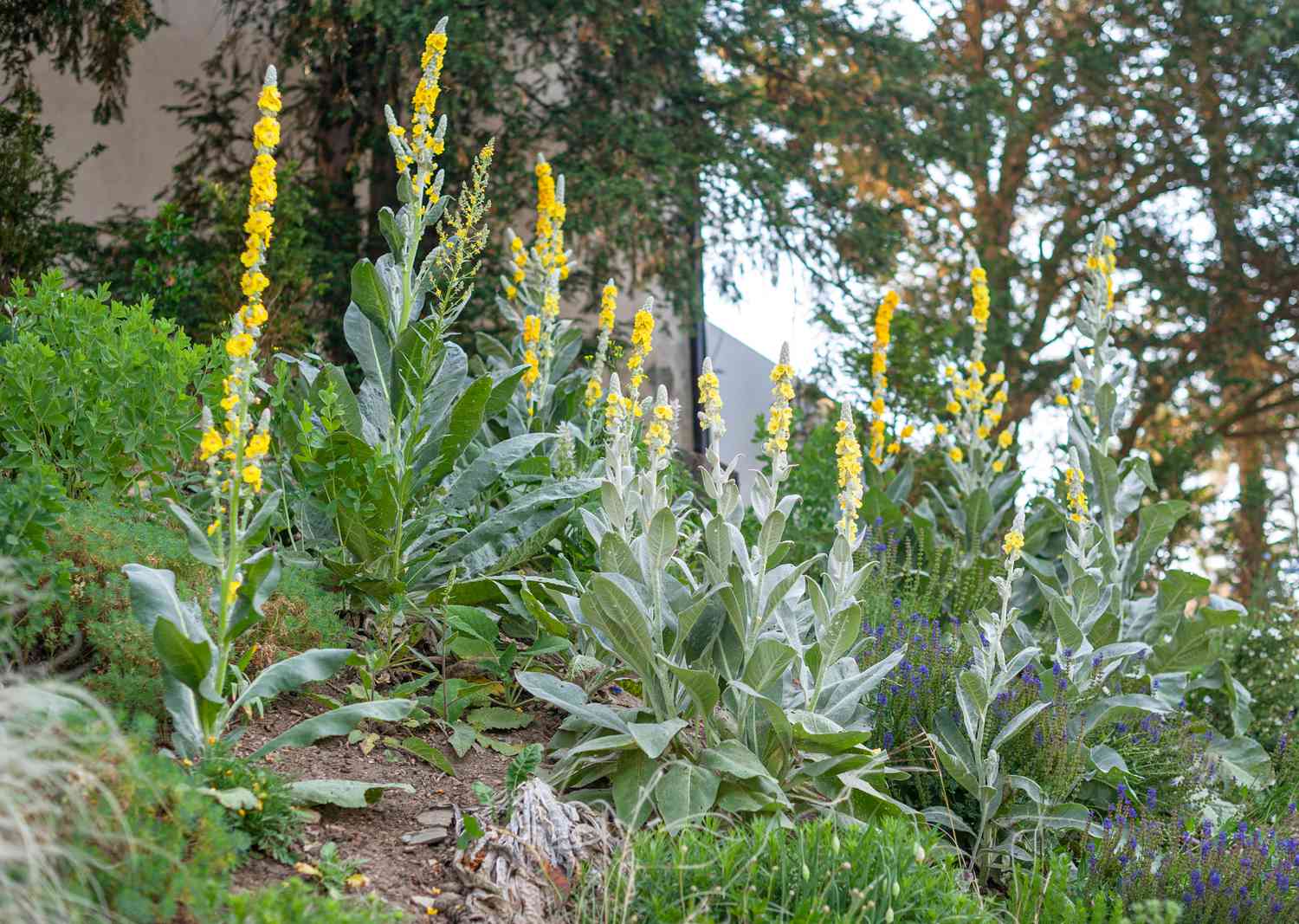Mullein Plant

In the tapestry of nature’s bounty, there exists a plant that has long captured the curiosity and admiration of herbalists, hikers, and health enthusiasts alike—the mullein plant. Revered for its medicinal properties and valued for its practical applications, mullein stands as a testament to the diverse offerings of the natural world. From its towering spires adorned with delicate yellow blossoms to its velvety leaves that whisper tales of ancient remedies, mullein has etched its place in herbal folklore and modern wellness practices.
Origins and Habitat:
Scientifically known as Verbascum thapsus, mullein is a biennial herbaceous plant native to Europe, Africa, and Asia, but has also naturalized in various regions of North America and Australia. It thrives in a range of habitats, from dry, rocky soils to disturbed areas along roadsides and meadows, often standing tall amidst the wilderness with its distinctive appearance.
Appearance and Growth Cycle:
One cannot overlook the striking appearance of the mullein plant. In its first year, it forms a basal rosette of large, soft, and fuzzy leaves, resembling a lush carpet of greenery. During the second year of growth, a single flowering stalk emerges, reaching heights of up to 6 feet or more. This towering spike is adorned with clusters of vibrant yellow flowers, each a beacon for pollinators seeking nectar and pollen. The velvety texture of the leaves and stems adds to its allure, inviting touch and admiration from passersby.
Medicinal Uses:
Throughout history, mullein has been revered for its myriad medicinal properties, earning it a place in traditional herbal medicine systems worldwide. The leaves, flowers, and roots of the plant contain an array of bioactive compounds, including mucilage, saponins, flavonoids, and volatile oils, which contribute to its therapeutic effects.
One of mullein’s most well-known uses is as a respiratory remedy. Its expectorant and soothing properties make it a valuable ally in alleviating coughs, congestion, and respiratory discomfort. Mullein tea, brewed from dried leaves and flowers, is a popular folk remedy for bronchitis, asthma, and other respiratory ailments, providing relief and promoting respiratory health.
Moreover, mullein possesses anti-inflammatory and analgesic properties, making it effective in relieving pain and inflammation associated with conditions such as arthritis and earaches. Mullein oil, extracted from the flowers and infused with a carrier oil, is commonly used to soothe ear discomfort and inflammation, earning it the moniker “ear oil” in folk medicine traditions.
Additionally, mullein is renowned for its mild sedative effects, which can help promote relaxation and improve sleep quality. Its gentle nature makes it suitable for individuals seeking natural alternatives to conventional sleep aids, offering a gentle embrace of tranquility at the end of a long day.
Practical Applications:
Beyond its medicinal uses, mullein boasts a range of practical applications that highlight its versatility and utility. The soft, fuzzy leaves of the plant have historically been used as natural tinder for starting fires, earning it the nickname “torch plant.” When dried, the stalks of mullein can be fashioned into makeshift torches or candle wicks, providing illumination in times of darkness.
Moreover, mullein leaves have been utilized in traditional crafts, such as basket weaving and natural dyeing. The velvety texture and malleable nature of the leaves lend themselves well to artistic endeavors, inspiring creativity and innovation in artisanal communities.
Environmental Significance:
In addition to its cultural and medicinal significance, mullein plays a vital role in supporting ecosystem health and biodiversity. As a pioneer species, it colonizes disturbed habitats and helps stabilize soils, preventing erosion and facilitating the establishment of other plant species. Furthermore, mullein serves as a valuable food source for pollinators, including bees, butterflies, and moths, contributing to the resilience of local ecosystems.
Conservation and Harvesting:
While mullein is abundant in many regions, sustainable harvesting practices are essential to ensure its continued availability for future generations. Harvesting should be done selectively and in moderation, avoiding overexploitation of wild populations. Cultivating mullein in home gardens or community plots can also provide a sustainable source of this valuable plant while supporting local biodiversity.
Conclusion:
The mullein plant stands as a testament to nature’s ingenuity and generosity, offering a wealth of medicinal, practical, and ecological benefits. From its towering spires adorned with golden blossoms to its velvety leaves that cradle ancient healing wisdom, mullein invites us to rediscover the wonders of the natural world and embrace its offerings with gratitude and reverence. As we cultivate a deeper connection to the plants that surround us, may we honor the legacy of mullein and preserve its legacy for generations to come.





